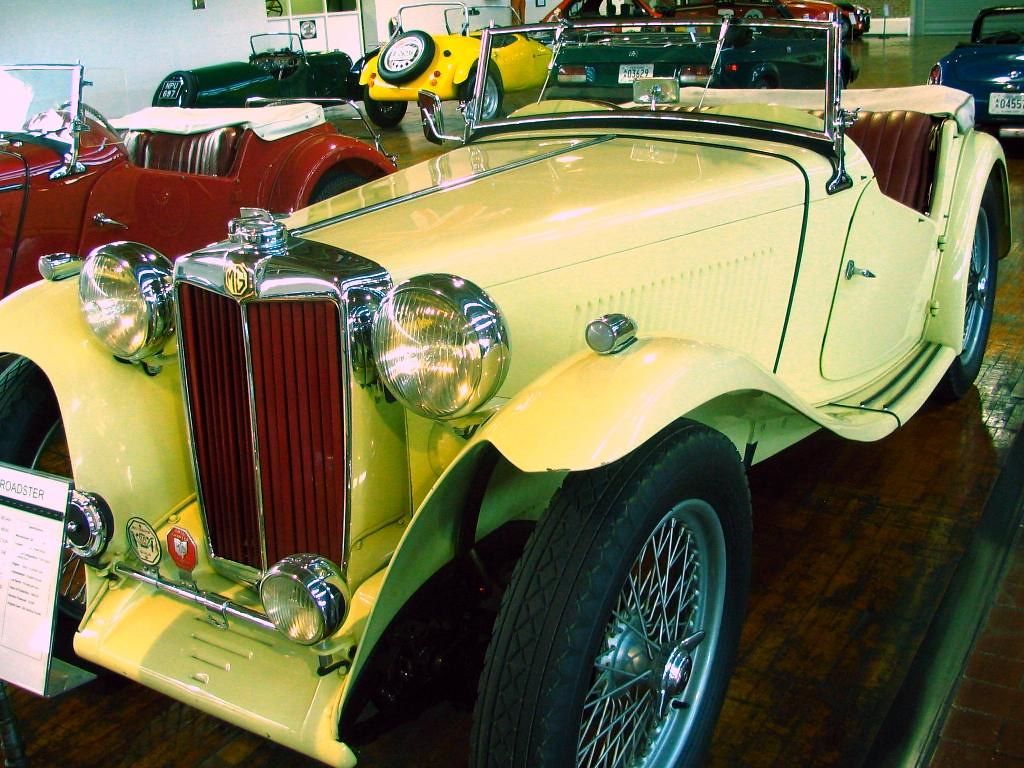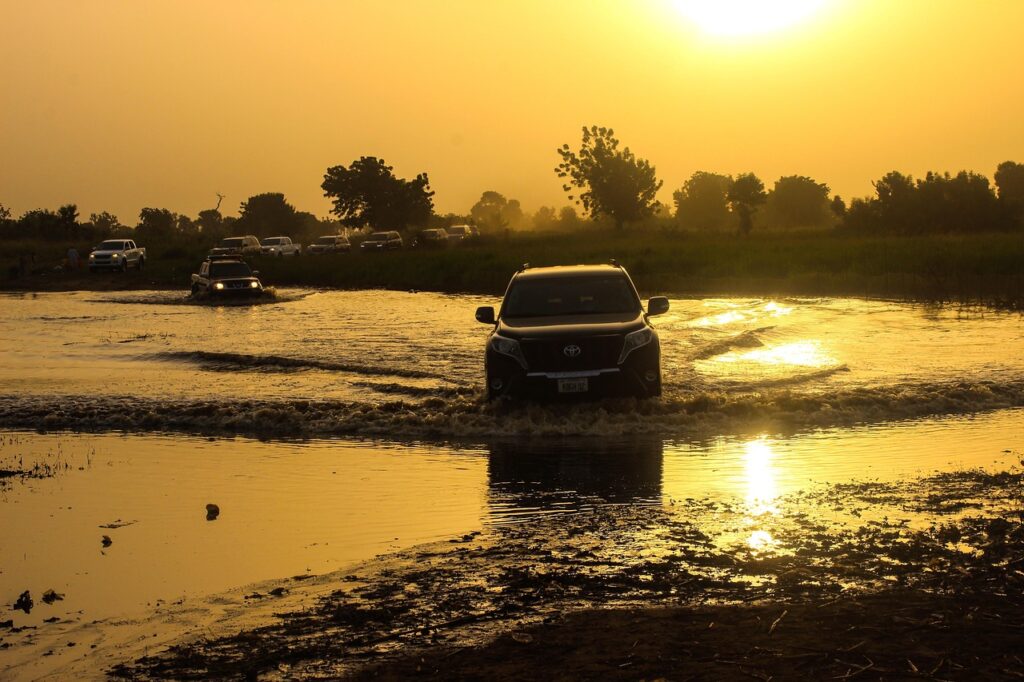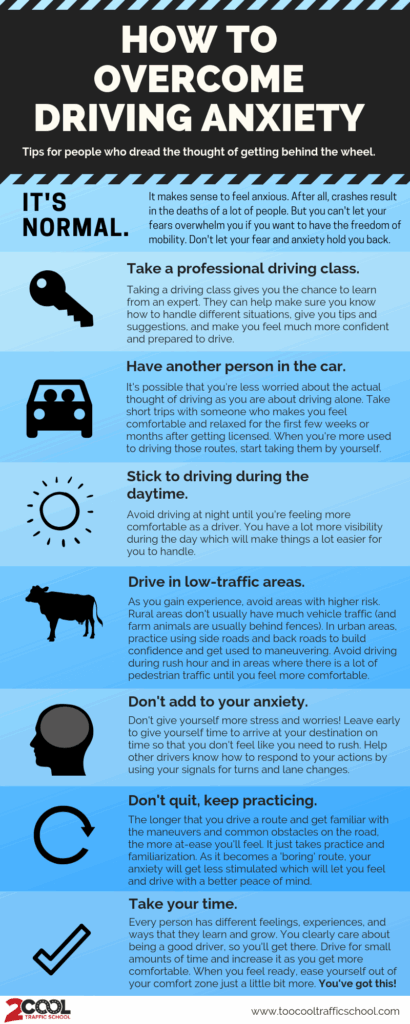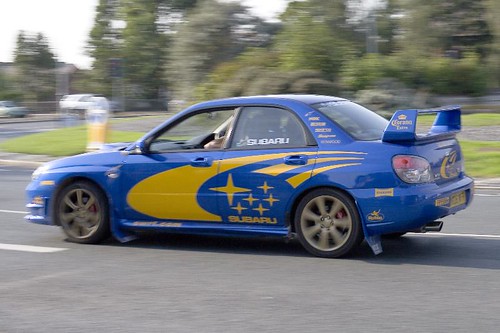
Road rage isn’t just an inconvenience; it’s a dangerous epidemic with the potential to affect every single driver, whether you find yourself as the aggressor or the unfortunate victim. The alarming reality is that aggressive driving can lead to severe injury or even death, yet a significant portion of these perilous incidents are entirely avoidable. Understanding how to navigate the complex psychological landscape of the road is crucial for maintaining both your safety and sanity.
In a world where traffic delays and hurried schedules often collide, it’s easy for tempers to flare behind the wheel. However, transforming your driving experience from a potential battlefield into a calm journey is entirely within your control. We’re here to equip you with practical, actionable strategies that empower you to mitigate your own stress and proactively prevent road rage situations before they even have a chance to ignite.
This comprehensive guide will delve into some of the smartest ways you can take charge of your driving environment and mindset. By implementing these clear, solution-oriented tips, you’ll not only enhance your personal safety but also contribute to a more pleasant and predictable experience for everyone sharing the road. Let’s explore how you can keep a cool head and stay safe, even when surrounded by the chaos of aggressive drivers.

1. **Practice Polite Driving Habits**The foundation of a stress-free driving experience, and indeed, a powerful defense against road rage, lies in simply being a polite driver. Aggressive driving often begins with seemingly minor infractions that can quickly escalate. By consciously adopting courteous habits, you not only make the road a better place for everyone but also significantly reduce the chances of provoking another driver’s ire or feeling frustrated yourself.
Consider common aggressive behaviors like tailgating, cutting off other vehicles, speeding, weaving through traffic, leaving high beam headlights on when unnecessary, and erratic braking. These actions are not just irritating; they can be perceived as direct challenges or threats by other drivers, creating a volatile atmosphere. Avoiding them is your first and best line of defense, preventing a chain reaction of aggression.
Furthermore, simple courtesies such as not driving in the left lane slower than the rest of traffic, and merging politely, demonstrate respect for others on the road. Always err on the side of being courteous. This isn’t just about avoiding conflict; it’s about making your daily commute smoother and more predictable. A polite driver creates fewer unexpected situations, which are often the spark for frustration and anger in others.
By being mindful of your speed, maintaining predictable movements, and communicating your intentions clearly with signals, you create an environment of mutual respect. This proactive approach ensures that you’re not inadvertently contributing to the very problem you’re trying to avoid, setting a positive example that can subtly influence the overall tenor of traffic around you. It’s a small effort that yields significant dividends in peace of mind and safety.
Read more about: Mastering the Merge: A Consumer Reports Guide to Seamlessly Entering High-Speed Traffic

2. **Maintain a Calm Driving Environment**Your car should be a sanctuary, not a pressure cooker. Creating a calm and peaceful internal driving environment is a surprisingly effective way to keep road anger at bay. What you listen to, and even the cleanliness of your vehicle, can profoundly impact your mood and resilience against external stressors.
One of the easiest ways to achieve this is by carefully selecting your in-car entertainment. Instead of aggressive music that might unintentionally amplify your stress, opt for tunes that make you happy or simply calm you down. Listening to audiobooks or podcasts can also be an excellent strategy to remain calm, especially during long commutes, redirecting your focus from frustrating traffic to engaging content.
Beyond sound, the visual aspects of your car play a role. Clutter, even if you’re not consciously aware of it, can contribute to feelings of stress. A clean car, free of unnecessary mess, promotes a sense of order and calm. Crucially, ensure your windshield is spotless. Struggling to see through a dirty windshield or constantly needing to use the wiper fluid can add anxiety and tension to your drive, feelings that can quickly morph into irritation and, ultimately, road rage.
By making your car a happy, peaceful place, you build a personal buffer against the inevitable frustrations of the road. This positive driving environment helps you stay centered, making it easier to ignore the aggressive behaviors of others and maintain a composed demeanor, no matter what challenges the commute throws your way.
Read more about: Navigating Rainy Roads: Identifying and Avoiding the Most Common Driving Mistakes

3. **Allow Yourself Plenty of Time**One of the most potent triggers for road rage, both your own and others’, is the relentless pressure of being late. When you’re constantly rushing, every red light feels like a personal affront, and every slow driver becomes an obstacle in your path. This anxiety and impatience significantly increase your likelihood of getting angry at other drivers or, conversely, making impulsive decisions that could anger them.
The solution is deceptively simple: leave yourself plenty of drive time. Knowing when you’ll be driving in heavy traffic, giving yourself ample time to reach your destination, and setting realistic expectations for how fast you’ll get there are critical steps. Don’t fall into the trap of setting unreasonable expectations for your travel speed, especially during peak hours.
If, despite your best efforts, you find yourself caught in unexpected traffic or running behind schedule, the key is acceptance. Trying to fight against an unchangeable situation only increases frustration. Instead, consciously accept that you’re running late and make a deliberate effort to relax from there. The stress of lateness can feel extra aggravating when hitting red lights or traffic, but your reaction to it is entirely within your control.
Having reasonable expectations about your travel time and building in a buffer means you can absorb minor delays without feeling overwhelmed. This small adjustment in planning can dramatically reduce your stress levels, allowing you to drive more calmly and safely, rather than feeling compelled to engage in risky maneuvers that could escalate into road rage.
Read more about: Beyond the Showroom Shine: A Mechanic and Enthusiast’s Unvarnished Truth About 13 Cars and Why New Isn’t Always Better
4. **Don’t Drive Under Distress**Your emotional and physical state before you even buckle up has a profound impact on your susceptibility to road rage. Driving when you are angry, upset, or drowsy is a recipe for disaster. These states impair your judgment, shorten your fuse, and make you far more likely to react aggressively or dangerously to perceived provocations on the road.
If you find yourself in a heightened emotional state, perhaps after an argument or a particularly stressful event, it’s wise to reconsider getting behind the wheel immediately. The road is not the place to process intense emotions, as the combination of traffic and your internal turmoil can quickly become a volatile mix. Your capacity for patience and tolerance is significantly diminished when under distress.
Similarly, drowsiness is a major contributor to irritability and can make you quick to anger. Beyond the obvious dangers of falling asleep at the wheel, sleepiness reduces your cognitive function, making you more prone to annoyance and less able to handle unexpected driving situations calmly. No one wants tired eyes to close while on the road, or a tired mind to snap.
If symptoms of road rage begin to surface while you’re driving, recognize them as a warning sign. It’s a good idea to pull over safely. Find a secure place to park, get out of the car, and walk around for a few minutes until you feel more composed. Never try to stop on the side of a busy highway; instead, drive to the next exit and find a public location. Taking a break, especially on long trips, at least every three hours, can refresh your mind and prevent escalating frustration.
Read more about: From Cameo to Icon: 14 Supporting Roles That Defined Their Films
5. **Adjust Your Driving Attitude**Much of what we perceive as intentional aggression from other drivers is, in reality, often unintentional. Cultivating an attitude of generosity and understanding on the road can be a powerful antidote to road rage. Give other drivers the benefit of the doubt. Many mistakes—a sudden lane change, a slow merge, or a momentary lapse in attention—are not personal attacks meant to offend you.
It’s easy to get caught up in the “us versus them” mentality on the road, but remember that every driver around you is simply trying to get to their destination, just like you. Questioning whether responding aggressively is truly worth the potential risk of injury or even death puts things into perspective. Getting worked up over a vehicle that has cut you off or somehow impeded your progress isn’t worth it.
Driving is not a competitive sport. You’re not a race car driver, and there’s no “winning” on the road, other than simply getting home safe. This mindset shift is crucial. If another driver wants to race or dodges in and out of lanes to pass you, let them go. Some people even enjoy passing you only to slow down, for their own “mysterious passive-aggressive reasons.” The best response is to slow down, create distance, and get behind a different car if possible.
By adopting a calm, non-competitive attitude, you insulate yourself from the anger and frustration that can easily breed on the road. Remembering that getting home safely is infinitely more important than teaching another driver a lesson will transform your entire driving experience. This perspective empowers you to focus on your own journey, rather than being drawn into unnecessary conflicts.
Read more about: Mechanic’s Blueprint: 7 Expert Strategies to Smoothly Navigate and Avoid Traffic Jams

6. **Get Enough Sleep**The quality and quantity of your sleep directly impact your temperament and ability to cope with daily stressors, and the demands of driving are certainly no exception. Doctors generally recommend that adults aim for about eight hours of sleep per night. When you consistently fall short of this, the accumulated sleep loss can seriously affect your mood, making you far more susceptible to irritation, resentment, and annoyance – all precursors to road rage.
Think of sufficient sleep as a crucial part of your defensive driving toolkit. When you’re well-rested, your cognitive functions are sharper, your reaction times are better, and your patience reserves are significantly higher. This makes you less likely to overreact to minor inconveniences like traffic congestion, a driver who cuts you off, or a red light that seems to last forever. Your mind is simply better equipped to handle frustration without escalating to anger.
Conversely, driving without adequate rest doesn’t just make you a potential road rage aggressor; it also makes you a danger to yourself and others due to impaired driving performance. Sleep deprivation can mimic the effects of alcohol, slowing your judgment and increasing the risk of accidents. Beyond the physical dangers, the emotional toll is clear: a tired driver is an angry driver waiting for a trigger.
Prioritizing your sleep isn’t just about feeling better; it’s a fundamental safety measure and a powerful strategy in your personal arsenal against road rage. By ensuring you get enough restful sleep, you are actively choosing to cultivate a calmer disposition, enhancing your ability to drive defensively and responsibly, and making your time on the road a much more peaceful experience.
Read more about: Vanishing Acts: 10 Famous Actors Who Disappeared After One Huge Hollywood Hit

7. **Consider the Cost**When emotions flare behind the wheel, it’s easy to lose sight of the potentially catastrophic consequences of road rage. Beyond the immediate frustration, there are very real, tangible costs—both financial and personal—that should act as a powerful deterrent. Understanding these stakes can help you pause and reassess before allowing anger to dictate your actions.
Firstly, consider the financial implications. Engaging in road rage can quickly lead to accident damage, which means costly repairs, increased insurance rates, and potential legal fees if a lawsuit ensues. Even if no one gets physically hurt, a traffic ticket for aggressive driving is a significant financial burden. If the incident escalates to criminal charges, you’re looking at lawyers, court costs, and potentially severe fines, all of which grow expensive, fast.
More gravely, road rage incidents can lead to serious injury or even death. Statistics paint a stark picture: within the last decade, there have been over 1,000 deaths from road rage, and fatal road rage accidents continue to increase significantly. Since 2008, almost 1,500 people have been killed in crashes involving road rage and aggressive driving. Furthermore, a disturbing 37% of aggressive driving incidents involve a firearm, demonstrating the deadly potential for escalation.
When you weigh a momentary burst of anger against the possibility of a lifetime of regret, criminal charges, astronomical financial penalties, or even the loss of life, the choice becomes clear. Is “winning” an imagined on-road contest worth potentially being injured or killed, or inflicting that upon someone else? Remembering these severe costs can be a potent reminder to slow down, calm down, and prioritize getting home safely above all else. This sober reflection is often enough to disarm brewing aggression and ensure a safer outcome.
Navigating the open road can be unpredictable. Even when you’re doing everything right to keep your cool, the actions of other drivers can still present challenges. This next section empowers you with concrete strategies for safely responding to external aggression, ensuring you can uphold road safety and protect yourself when faced with drivers who haven’t quite mastered the art of calm commuting. These aren’t just tips; they’re essential tools for maintaining control in potentially volatile situations.
Read more about: Beyond the Badge: Uncovering the Hidden Flaws in 14 Fan-Favorite Vehicle Models

8. **Get Away from Aggressive Drivers**When you spot a driver exhibiting aggressive behavior, your primary goal should be to create distance and disengage. It’s not about proving a point or challenging them; it’s about prioritizing your safety and the safety of everyone else on the road. Simply let them go around you, and more often than not, they’ll quickly be on their way, taking their aggression with them.
If you notice someone driving erratically or aggressively, immediately adjust your position. This could mean slowing down to allow them to get ahead, or changing lanes so that you are no longer directly next to them. The objective is to remove yourself from their immediate vicinity, making it harder for their aggressive actions to directly impact you.
Sometimes, an aggressive driver might seem determined to stay near you, perhaps tailgating or swerving. In such cases, avoid speeding up to escape them. Instead, consider taking the next exit or pulling off the road safely, if possible, to let them pass completely. Your physical distance from an angry motorist is your best defense, ensuring you aren’t an easy target for their unpredictable behaviors.
Read more about: Beyond the Badge: Uncovering the Hidden Flaws in 14 Fan-Favorite Vehicle Models
9. **Refrain from Rude Gestures or Yelling**It’s an instinctive reaction for many when faced with aggressive driving: the urge to honk furiously, yell out the window, or make a rude gesture. However, these actions almost always escalate a situation. Remember, you’re not the police, and it’s not your job to teach other drivers a lesson, even if their driving is truly terrible.
Making eye contact with an aggressive driver who is actively trying to pick a fight can be dangerous. It can be seen as an invitation to engage further, fueling their rage. Your best strategy is to avoid eye contact altogether and focus on the road ahead. Your silence and lack of reaction are powerful tools in defusing a potentially explosive encounter.
Allowing yourself to angrily act out, even within the confines of your own vehicle, may incite others toward aggressive behavior. Shouting out frustrations might feel cathartic in the moment, but studies suggest that venting can actually increase feelings of frustration and danger, rather than diminishing them. Keeping your focus on the road also means you’re not distracted by an angry interaction, thereby enhancing your safety.
Read more about: Driving Experts Reveal 12 Calm Safe Hacks to Neutralize Aggressive Drivers and Road Rage

10. **Use Your Horn Sparingly**The car horn is an essential safety device, primarily designed for emergency situations where you need to alert another driver to your presence or an impending hazard. Unfortunately, it’s often misused as an expression of frustration or anger, which can quickly become a road rage trigger for many people.
If you absolutely must get a driver’s attention, a light tap on the horn is usually sufficient. Avoid prolonged or aggressive honking, as this can be perceived as an act of hostility. For instance, if a driver at a light isn’t moving, give them a few extra seconds of grace before gently reminding them; everyone can have a momentary lapse of attention.
Resist the urge to use your horn out of impatience, especially in traffic jams. Everyone else around you is likely just as annoyed, and aggressive honking will only raise the collective stress level without alleviating the traffic itself. Using your horn sparingly demonstrates courtesy and helps maintain a calmer, more predictable driving environment for everyone.
Read more about: Spill the Tea (But Not That One): 14 Drinks Customers Adore That Bartenders Secretly Can’t Stand Making
11. **Report Road Rage to Authorities**There are situations where simply disengaging isn’t enough, and an aggressive driver’s actions become a serious threat to public safety. In such cases, reporting road rage to the authorities is not only responsible but could potentially save lives. Many states have aggressive driver hotlines specifically for this purpose.
Instead of directly confronting an aggressive driver, which is highly dangerous, your role is to observe and inform. Note their license plate number, the make and model of their vehicle, and any distinguishing features. Then, safely call the appropriate hotline or, in cases of immediate danger or attack, dial 911 right away.
If you find yourself being followed or actively attacked by an aggressive driver, do not drive home. This could lead them directly to your residence and compromise your safety further. Instead, stay on the phone with the dispatcher and drive to the nearest police station, a well-lit convenience store, or another public location where there are witnesses and security. Your priority is to get to a safe place and allow law enforcement to intervene.
Read more about: Beyond the Headlines: The Haunting Cases of 4 Celebs Who Vanished Without a Trace

12. **Maintain Safe Distances**Aggressive driving frequently manifests as tailgating, where drivers follow too closely for comfort, creating a dangerous situation for everyone involved. To proactively avoid road rage and potential accidents, consistently maintain ample space between your vehicle and others. This defensive practice gives you crucial reaction time if a driver ahead suddenly brakes or makes an unexpected move.
Think of it as creating a safety cushion around your vehicle. This space allows you to anticipate mistakes from other drivers, which are inevitable. If you’re driving too close, and the car in front of you slams on their brakes, you might not have enough time to react, leading to a rear-end collision, which can easily spark road rage from either party.
If you find yourself being tailgated, the worst thing you can do is brake sharply to “wake them up.” This aggressive reaction often leads to a collision. Instead, try to move to a different lane if it’s safe to do so. If changing lanes isn’t an option, gradually slow down and allow the aggressive driver behind you to pass. Using your 4-way hazards if you see hazards ahead, or if someone is narrowing the distance behind you, can also be a safer way to alert others without provoking a crash.
Read more about: Unveiling the Future: Life Aboard the USS Gerald R. Ford, the World’s Largest Aircraft Carrier

13. **Avoid Phone Distractions**In our hyper-connected world, the temptation to use our phones while driving is constant, but it’s a monumental distraction that significantly contributes to accidents and, consequently, road rage. Talking on the phone, texting, eating, or even applying makeup behind the wheel pulls your focus away from the critical task of driving.
The statistics are stark: cell phone usage contributes to over 25% of auto accidents in the U.S. Texting, in particular, is extraordinarily dangerous; taking your eyes off the road for just five seconds while driving at 55 mph is equivalent to traveling the entire length of a football field blindfolded. Such distractions mean you’re more likely to be caught off guard by other drivers’ actions, which can fuel your own frustration and potentially trigger an aggressive response from those around you.
Beyond the obvious safety risks, a distracted driver is often an unpredictable driver. Erratic braking, slow reactions at lights, or weaving due to divided attention can easily irritate other motorists, potentially sparking their road rage. By putting your phone away and focusing solely on driving, you not only make the road safer for yourself and others but also eliminate a major source of potential conflict and frustration.
Read more about: Unlocking Your Ride: 14 ‘Secret’ Car Features Most Drivers Don’t Know About
14. **Utilize Turn Signals and Check Blind Spots**Clear communication is paramount on the road, and your turn signals are your primary tool for communicating your intentions to other drivers. Any time you plan to make a turn, change lanes, or merge, activating your turn signal well in advance provides a crucial warning to those around you, allowing them time to react safely and predictably.
Failing to signal can be extremely frustrating and even frightening for other drivers. Imagine someone suddenly cutting into your lane without warning; this kind of unexpected maneuver is a major road rage trigger. By consistently using your signals, you reduce uncertainty and contribute to a smoother, more courteous flow of traffic, minimizing the chances of provoking an aggressive response.
Equally important is diligently checking your blind spots, especially when changing lanes or merging at higher speeds. A quick glance in your mirrors isn’t always enough. You must physically turn your head and check those hidden areas to ensure you aren’t about to cut someone off. Carelessly slotting into a lane and forcing another driver to slam on their brakes is a surefire way to spark road rage and can lead to dangerous confrontations. Prioritizing these simple yet critical habits can dramatically improve your road safety and overall driving experience.
Read more about: Unlocking Your Ride: 14 ‘Secret’ Car Features Most Drivers Don’t Know About
Navigating the complexities of modern traffic requires more than just knowing the rules of the road; it demands a proactive mindset, emotional intelligence, and a commitment to safe, considerate driving. By internalizing these strategies – managing your own temperament and skillfully deflecting the aggression of others – you transform your vehicle from a potential hotbed of stress into a haven of calm. You’re not just avoiding road rage; you’re contributing to a safer, more predictable, and ultimately, more pleasant journey for everyone. So, take these lessons to heart, hit the road with confidence, and make every trip a testament to smart, defensive driving.








